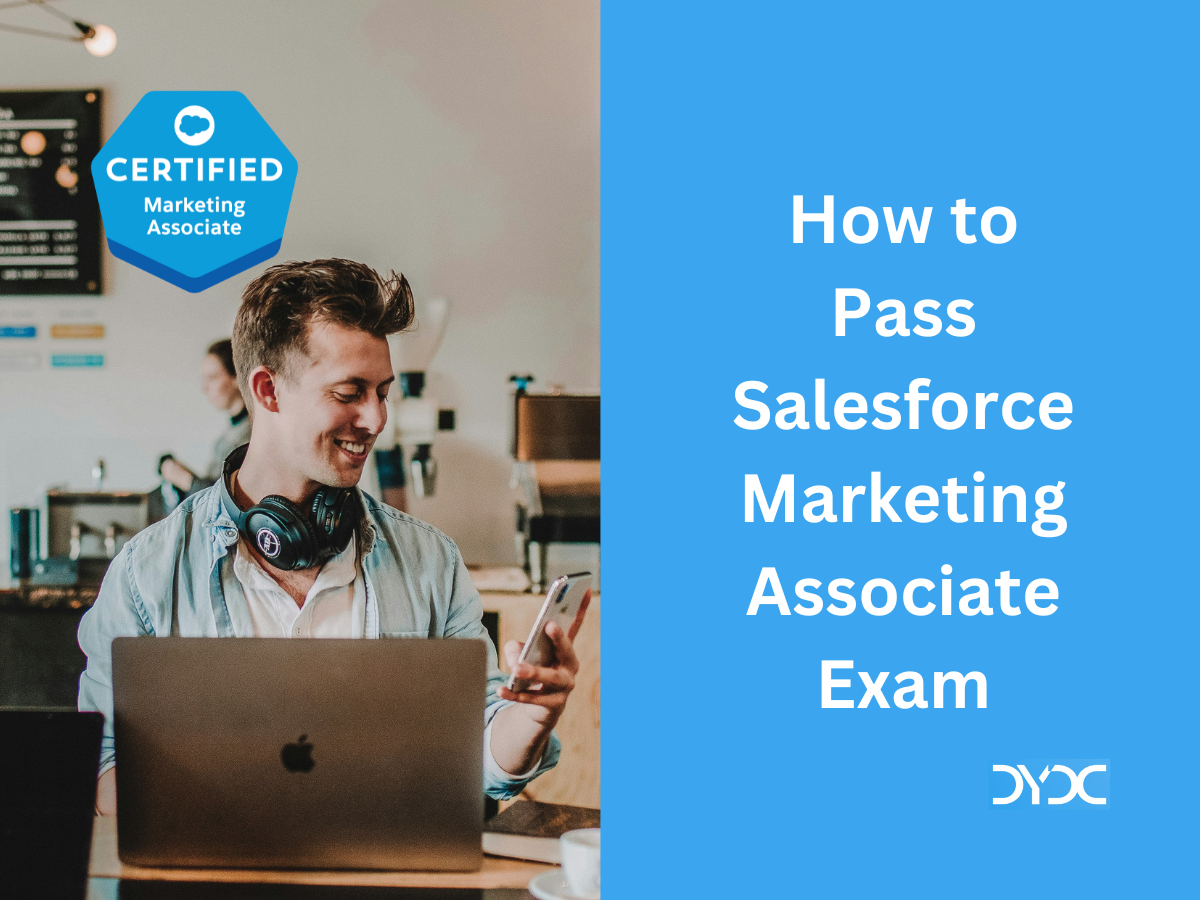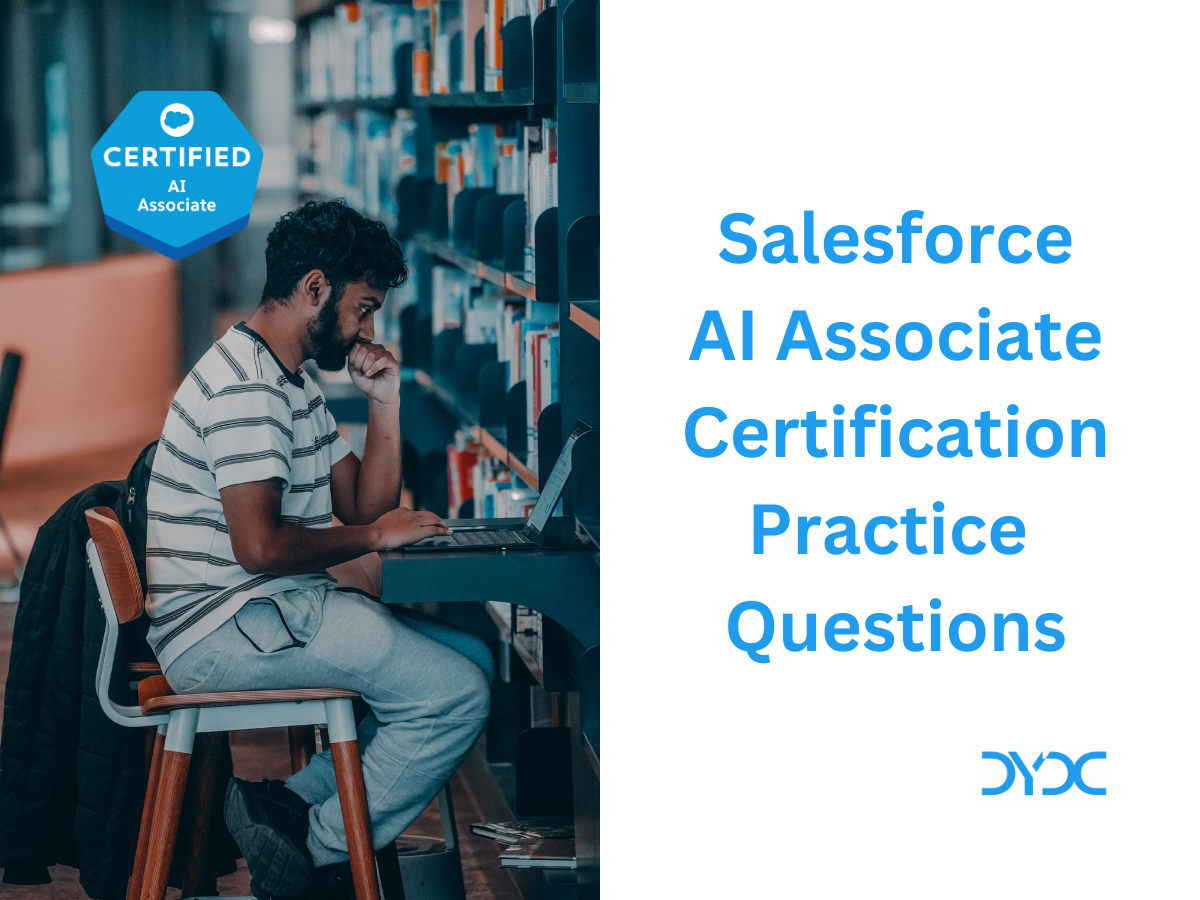How to Pass Einstein Next Best Action Accredited Professional Exam
1. About the Einstein Next Best Action AP Exam
The Einstein Next Best Action Accredited Professional is intended for individuals who have the knowledge, skills, and experience with data ingestion processes, security and access implementations. This credential expects basic Salesforce knowledge including objects, data and data modeling.
- Content: 20 multiple-choice/multi-select questions
- Time allotted to complete the exam: 30 minutes
- Passing Score: 75% (15 out of 20 questions)
- Registration Fee: $150 plus applicable taxes
- Retake Exam Fee: $75 plus applicable taxes
- Prerequisites: None
2. Exam Outline
| Topics | Weighting |
|---|---|
| Einstein Next Best Action Basics ● Explain what Einstein Next Best Action is and the problems it solves. ● Describe the benefits of Einstein Next Best Action. ● Explain the many use cases that can be applied to Einstein Next Best Action. | 50% |
| Einstein Next Best Action Advanced Topics ● Understand how Einstein Next Best Action fits into the Einstein Platform family. ● Explain the different components that make up Einstein Next Best Action. ● Set up and deploy recommendations to your employees or customers. | 50% |
3. Einstein Next Best Action Accredited Professional Exam Study Course
Accredited Professional Exam curriculum is available on Salesforce Partner Learning Camp. Please refer to Accredited Professional Partner Community Page for details.
4. Important Topics for Einstein Next Best Action Accredited Professional Exam
- Einstein allows all Salesforce users to:
- Discover insights that bring new clarity about your company’s customers.
- Predict outcomes so your users can make decisions with confidence.
- Recommend the best actions to make the most out of every engagement.
- Automate routine tasks so your users can focus on customer success.
- Steps to set up Einstein Next Best Action:
- Define a set of recommendations.
- Create action strategies.
- Integrate predictive models (optional).
- Display recommendations.
- Activate automation.
- Recommendations are standard Salesforce records, that are processed by strategies and associated with flows.
- Strategies determine which recommendation records are surfaced using business rules, predictive models, and other data sources.
- Strategy Builder is a point-and-click process automation tool used with Einstein Next Best Action. Strategy Builder funnels recommendation records through your business logic to determine which recommendations are surfaced on your record pages.
- Put Predictions into Action with Next Best Action
- A prediction says something about the object in question, for example, “This person probably loves to golf.”
- A recommendation is a suggested action: “Sell this person plaid pants.”
- Einstein Next Best Action’s Generate, Enhance, and Map elements:
- Use Next Best Action’s Generate element to create recommendations on the fly, either from a Salesforce object (an Account, for example) or an external source, such as a SQL database or a company product catalog.
- The Enhance element can dynamically modify a recommendation. For example, if a given product is no longer available, recommendations are automatically updated.
- Use the Map element to modify or create fields in recommendations and then map them to variables in flows.
- Next Best Action – Strategy Builder Elements
- Enhance: The Enhance element allows you to modify a set of recommendations on the fly, every time a strategy is executed. These recommendations can be static and live as records in Salesforce, or dynamic and sourced from external data sources or other Salesforce objects.
- Generate: The Generate element allows you to create in-memory, on-the-fly recommendations, either from an external data source or from other Salesforce objects.
- Load: Load is the first element in a strategy branch. Load and filter the records of a Recommendation object. Or load and filter the records of any object, and convert them into recommendations at the end of the strategy using the Map element. Your load elements determine which of your recommendations are evaluated when your strategy executes.
- Filter: Create an expression that allows you to block or filter out undesirable recommendations, depending on the context.
- Limit Reoffers: You can decide how many times the user must react to a recommendation and how many days to wait before displaying the recommendation again.
- Map: The Map element lets you use formulas to create Recommendation fields and modify existing fields without Apex code. Instead, it relies on expressions and formulas. Use the Map element to pass data from a Recommendation field with one name to a Flow input with a different name. Or use it to modify current values for Description, Name, and other fields and personalize them with context-specific data.
- Sort: Choose how recommendations are ordered within a branch and reorder them using Recommendation fields.
- Branch Merge: Combine recommendations from multiple branches into a single branch.
- Branch Selector: Filter multiple branches through a branch selector and create unique expressions for each branch. If the expression is true, recommendations in the branch are allowed through and combined into a single branch.
- First Non Emplty Branch: The first non-empty branch element allows you to filter branches in the order they appear on the canvas. The first branch that contains recommendations is allowed through, all other branches are blocked.

- The following requirements are true for both the Generate and the Enhance elements.
- They require an Apex action marked as an invocable method.
- They can pass any number of inputs to the Apex action, either as lists or as a list of lists of primitives, sObjects, and user-defined Apex objects. To provide more than one input, the input parameter must be a list or a list of lists of a user-defined Apex object.
- They return a list of recommendations. Invocable methods support returning either a list of an sObject type or a list of lists of an sObject type. As both Generate and Enhance operate on a list of recommendations and not a single recommendation, the method must return a List<List<Recommendation>>.
- Example of a simplest strategy. (Output is the final step)

- Argument syntax: $Record.Id (i.e. $Record.Field_API_Name__c)
- You can test a Strategy by clicking on the Test button on Strategy Builder
- Where can you display recommendations?
- Lightning Page (Lightning App Builder)
- An App’s Home Page
- Experience Builder Site Page (Experience Builder)
- Visualforce Page: Use Lightning Out to add the lightning:nextBestAction component.
- Custom Apps: Add Einstein Next Best Action functionality into your app with the global lightning:nextBestAction component.
- Einstein Next Best Action Component

5. Additional Resources

Recommended Articles
- 300+ Latest Salesforce Interview Questions and Answers
- Process Automation Accredited Professional Exam Guide
- Financial Service Cloud Accredited Professional Exam Guide
- Salesforce Net Zero Cloud Accredited Professional Exam Guide
- Advanced Cross Channel Accredited Professional Exam Guide
- JavaScript Interview Questions







